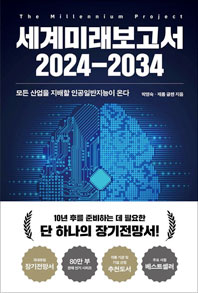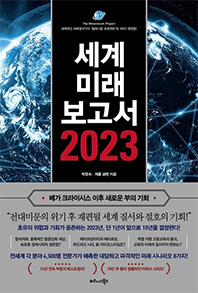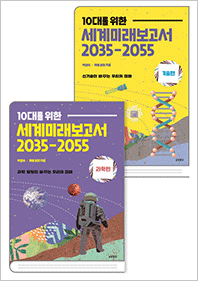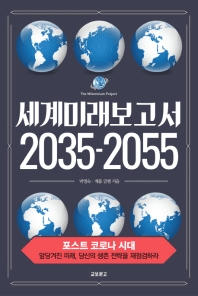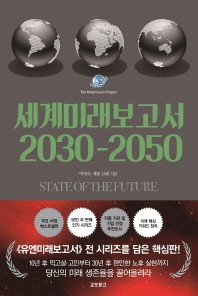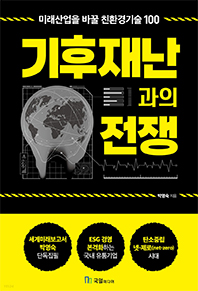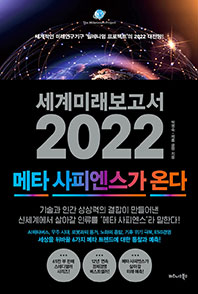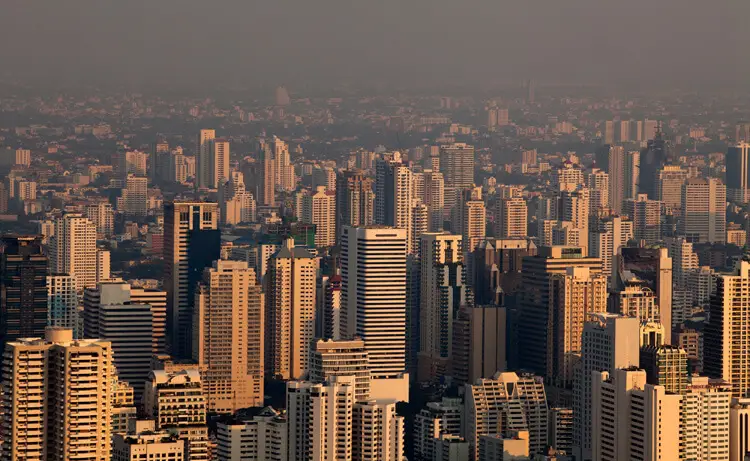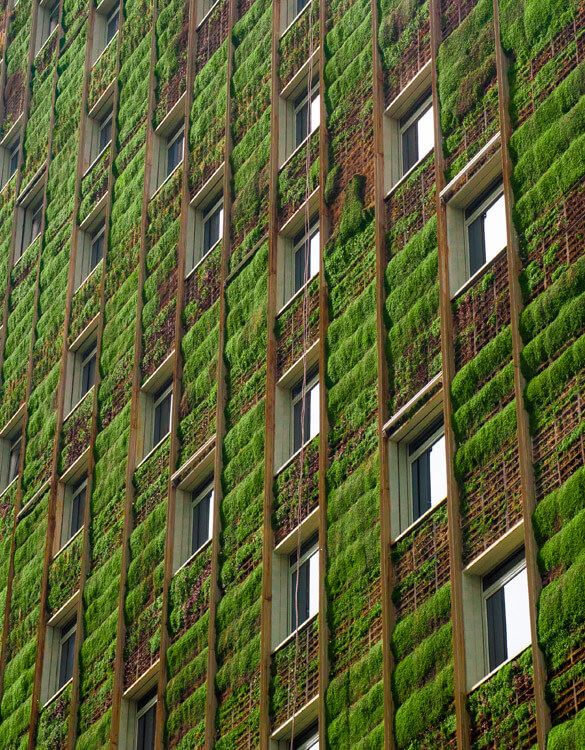[미래 도시] Hi-tech, intelligent buildings are revolutionising the urban landscape. 21세기 상반기에 급증하는 도시 인구는 많은 도시의 환경, 건강 및 인프라에 심각한 문제를 일으켰다. 특히 신흥 선진국에서는 도심이 오염되고 과밀하며 만성적으로 비효율적이었다. 전 세계적으로 대도시 지역은 전례없는 규모로 성장하여 도시 계획자가 적응해야하는 부담이 커지고 있다.
[미래 도시] Hi-tech, intelligent buildings are revolutionising the urban landscape. 21세기 상반기에 급증하는 도시 인구는 많은 도시의 환경, 건강 및 인프라에 심각한 문제를 일으켰다. 특히 신흥 선진국에서는 도심이 오염되고 과밀하며 만성적으로 비효율적이었다. 전 세계적으로 대도시 지역은 전례없는 규모로 성장하여 도시 계획자가 적응해야하는 부담이 커지고 있다.Hi-tech, intelligent buildings are revolutionising the urban landscape
In the first half of the 21st century, a soaring urban population posed serious problems for the environment, health and infrastructure of many cities. In newly industrialised nations especially, urban centres became polluted, overcrowded and chronically inefficient. Throughout the world, metropolitan areas grew to unprecedented sizes – putting huge and increasing pressure on city planners to adapt.
Amid worsening climate change and resource depletion, urban regions were forced to either evolve, or die off. Countless cities failed to make this transition in time, and went the way of Detroit, many being abandoned and left to decay, or subject to intense military control and martial law. In those that survived, a new generation of buildings and infrastructure emerged based on these rapidly changing social and environmental needs.
Among the most important trends in modern architecture has been self-sufficiency. By 2050, environmental and resource degradation have become so obvious and huge, it has triggered a radical rethink of production and consumption by citizens. As such, many modern skyscrapers now come complete with the internalised creation of food, water and other resources. Farms often comprise multiple floors of a tower – regardless of its purpose – while rain, mist and condensation are constantly trapped and stored. Advanced 3D printers are available locally on site to manufacture everything from household furniture, to personal transportation, to replacement parts for the building itself. Energy is typically provided by photovoltaics and wind turbines. These are often integrated seamlessly into the building design, so as not to harm the aesthetic appeal. Solar power, for instance, can be collected by window panes or special photovoltaic paints applied to outside surfaces.* The efficiencies for solar have been improving steadily for decades.
Nature features heavily in these structures. Many towers incorporate parks and sky gardens, helping to increase the overall biodiversity of a city, with numerous bird and small animal species finding homes and nesting places. Careful environmental controls ensure that these creatures are protected while not becoming a nuisance for human residents. The outside of buildings are often covered with vegetation, or special membranes, designed to filter pollutants and capture CO2.* Government regulations now require a large percentage of buildings to be fitted in this way, making it a dominant style of architecture today. The artificial parts of this outer layer can also adjust to wind conditions, temperatures, moisture levels and sunlight in order to produce optimal thermal comfort for the human and animal occupants. Algae bio-fuel cells adorning the facade can also absorb CO2 while acting as an additional source of electricity.
Buildings are integrated into the city around them in a number of ways. Fuel restrictions and other factors have led to increasingly socialised transportation. The bottom floors of most towers have dedicated public car share (AI controlled) and bike share facilities, while bus and other mass transit stations are often built into the structures themselves. Pedestrian sky-walkways feature heavily in most modern cities, improving access and permeability of the urban realm, while shielding walkers from the elements. If ornamented with foliage, they can also function as elevated parks and gardens.
Buildings are making cities more comfortable and inviting in various other ways. By tightly controlling a tower's reflectivity, heat absorption and heat balance, for example, planners can significantly reduce the temperatures associated with urban heat island effects. This comes at a time when temperatures in less developed cities are soaring from the combined effects of climate change and urbanisation.
The average modern building in 2050 is seamlessly integrated into a city's power supply, acting as another node in a city-wide smart grid. Nearly all buildings are able to transmit locally produced energy back into the system. Wireless electricity transfer is also common, with energy beamed invisibly between buildings, which eliminates the need for unsightly poles and cables. AI systems within each building direct its total power consumption, adjusting according to the varying needs of occupants and taking into account even the most minor of details.
Overall, this new smart infrastructure is helping to drastically improve the nature of urban living. Cities following this model are becoming far more liveable, clean, efficient and modernised. Though many regions have collapsed into chaos, others are now leading the way in providing a more sustainable path for humanity.
첨단 지능형 빌딩 도시 경관을 혁신하다
21세기 상반기에 급증하는 도시 인구는 많은 도시의 환경, 건강 및 인프라에 심각한 문제를 일으켰다. 특히 신흥 선진국에서는 도심이 오염되고 과밀하며 만성적으로 비효율적이었다. 전 세계적으로 대도시 지역은 전례없는 규모로 성장하여 도시 계획자가 적응해야하는 부담이 커지고 있다.
악화되는 기후 변화와 자원 고갈로 인해 도시 지역은 진화하거나 쇠퇴할 수밖에 없다. 수많은 도시가 이러한 전환을 제 시간에 하지 못했고, 디트로이트의 선례를 따랐으며, 많은 도시가 버려지고 쇠약 해 지거나 강력한 군사 통제와 계엄령의 대상이 되었다. 이 변화를 살아남은 건물에서 빠르게 변화하는 사회 및 환경적 요구에 따라 새로운 세대의 건물과 인프라가 등장했다.
현대 건축에서 가장 중요한 트렌드 중 하나는 자급 자족이다. 2050년까지 환경 및 자원 저하가 너무나 명백하고 거대해져 시민들의 생산과 소비에 대한 근본적인 재고를 촉발했다. 따라서 많은 현대식 고층 건물은 이제 음식, 물 및 기타 자원의 내적 생산으로 완성됩니다. 농장은 목적에 관계없이 타워의 여러 층으로 구성되는 경우가 많으며 비, 안개 및 응결은 지속적으로 저장된다. 고급 3D 프린터는 가정용 가구에서 개인 운송, 건물 자체의 교체 부품에 이르기까지 모든 것을 제조하기 위해 현장에서 사용할 수 있다. 에너지는 일반적으로 태양광 발전 및 풍력터빈에서 제공되는데 미적 매력을 해치지 않기 위해 종종 건물 디자인에 매끄럽게 통합된다.* 태양광의 효율은 수십 년 동안 꾸준히 개선되었다.
자연은 이러한 구조에서 크게 특징지어진다. 많은 타워에는 공원과 하늘정원이 통합되어 있어 수많은 새와 작은 동물 종이 집과 둥지를 찾아오고 이는 도시의 전반적인 생물 다양성을 높이는 데 도움이 된다. 심사숙고한 환경통제를 통해 이러한 생물이 인간 거주자에게 성가신 일이되지 않도록 보호한다. 건물 외부는 종종 오염 물질을 걸러 내고 CO2를 제거하도록 만들어된 식물 또는 특수 막으로 덮여 있다. 정부 규정은 이제 많은 비율의 건물이 이러한 방식을 갖추도록 요구하기 때문에 오늘날 지배적인 건축 스타일이 되었다. 이 외층의 인공 부분은 사람과 동물 거주자에게 최적의 열쾌적 성을 제공하기 위해 바람 조건, 온도, 습기 수준 및 햇빛을 적당하게 조절할 수도 있다. 외벽을 장식하는 조류 바이오 연료 전지는 추가 전기 공급원 역할을하면서 CO2를 흡수할 수 있다.
건물은 여러 가지 방법으로 주변 도시에 통합되고 연료제한 및 기타 요인으로 인해 교통이 점점 더 사회화되었다. 대부분의 타워의 맨 아래 층에는 전용 공용 차량 공유 (AI 제어) 및 자전거 공유 시설이 있으며, 버스 및 기타 대중 교통 정류장은 종종 구조물 자체에 건설된다. 보행자 하늘 산책로는 대부분의 현대 도시에서 많이 사용되어 도시 영역의 접근성과 침투성을 향상시키면서 보행자를 위험 요소로부터 보호하고 단풍으로 장식하면 공중부양 공원과 정원으로도 기능할 수 있다.
건물은 도시를 다양한 방법으로 더 편안하고 매력적이게 만든다. 예를 들어, 설계자는 타워의 반사율, 열 흡수 및 열 균형을 엄격하게 제어함으로써 도시 열섬 효과와 관련된 온도를 크게 낮출 수 있다. 이는 저개발 도시의 기온이 기후 변화와 도시화의 영향으로 치솟는시기에 나타난다.
2050년의 평균적인 현대식 건물은 도시의 전원 공급 장치에 원활하게 통합되어 도시 전체의 스마트 그리드에서 또 다른 노드 역할을 한다. 거의 모든 건물이 지역적으로 생산된 에너지를 전체 시스템으로 다시 전송할 수 있다. 무선 전기 전송도 일반적이며 건물 사이에 보이지 않는 에너지가 전달되므로 보기 흉한 기둥과 케이블이 필요하지 않다. 각 건물 내의 AI 시스템은 총 전력 소비를 통제여 거주자의 다양한 요구에 따라 조정하고 가장 사소한 세부 사항까지 고려한다.
전반적으로 이 새로운 스마트 인프라는 도시 생활의 본질을 획기적으로 개선하는 데 도움이 된다. 이 모델을 따르는 도시는 훨씬 더 살기 쉽고 깨끗하고 효율적이며 현대화되고 있다. 많은 지역이 혼란에 빠졌지만 다른 지역은 이제 인류에게 더 지속 가능한 길을 제공하는 길을 선도하고 있다. <저작권자 ⓒ ainet 무단전재 및 재배포 금지>
|
[세계미래보고서]시리즈, 판매제품
많이 본 기사
최신기사
|




